The SGX Collection: Business Heritage Collection — Bridging the Legal Deposit Gap
Librarian Chris Tang highlights the SGX Collection and tells us what we can find.
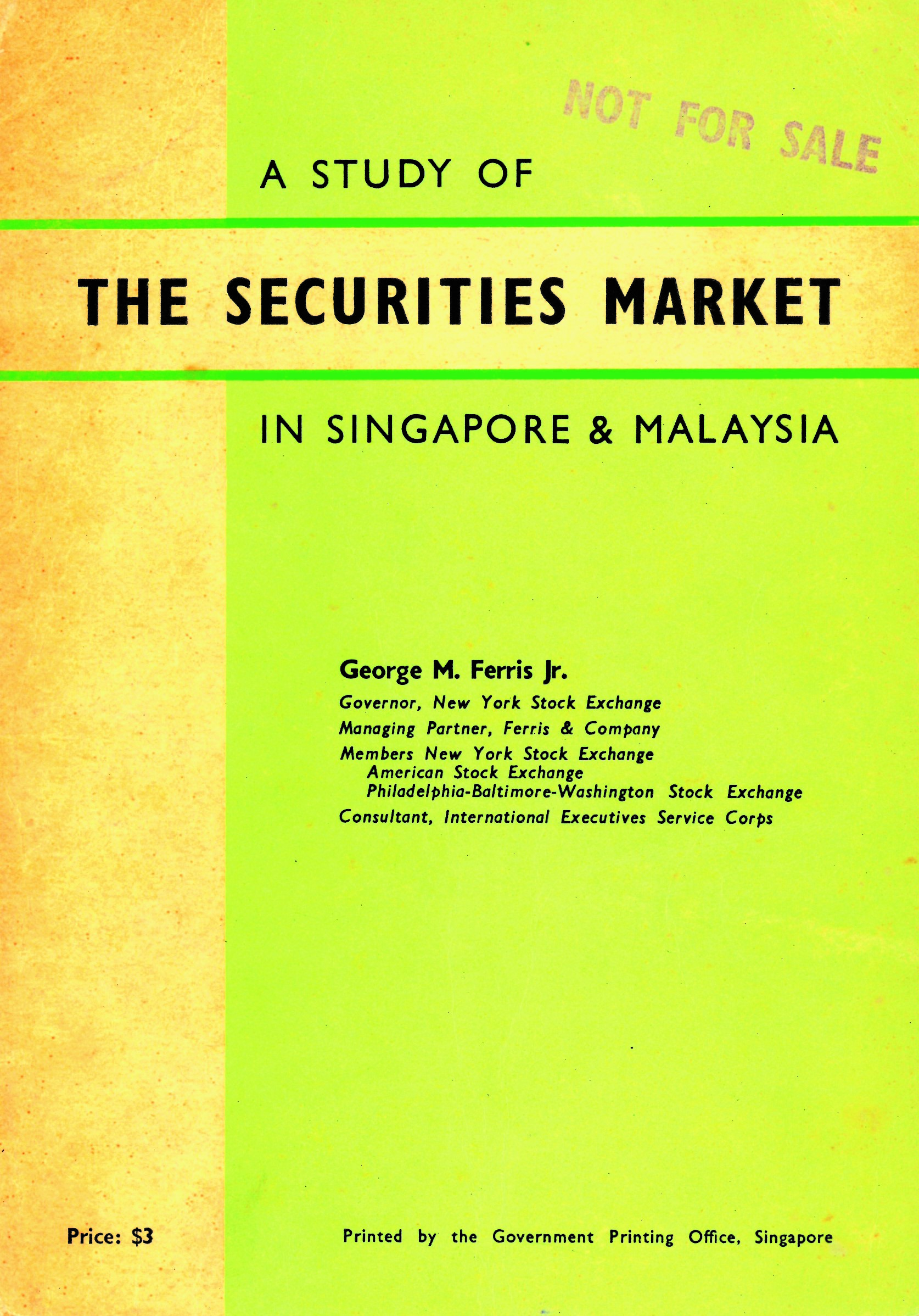
In 2007, the Singapore Exchange Ltd (SGX) donated more than 21,000 volumes of publications and CD-Roms from its Information Resource Centre to the National Library Board (NLB). They collectively became the SGX Collection.
NLB’s collaboration with SGX also includes IRIS@National Library (Investment Resource and Information Service), a conglomeration of six computer terminals at the Business Collection, Level 8 of the Lee Kong Chian Reference Library. IRIS@National Library provides NLB patrons with free access to SGX’s archive of electronic copies of all locally listed companies’ annual reports, corporate announcements, prospectuses and initial public offers (IPOs) from 1997 to the present, as well as real-time local stock prices and trading tools such as charts and ratios.
The SGX Collection is the largest single donation in terms of volume in recent NLB history. Of the 21,000 items, approximately 13,000 are print publications, and the rest of the 8,000 items are CD-Roms. The print publications consist mostly of locally listed companies’ annual reports and prospectuses from the 1970s onwards, together with some valuable older materials detailed below in this article. The CD-Roms are digital disc copies of more recent annual reports and miscellaneous circulars and supplemental documents from 2000 onwards, dating from the period when SGX started requiring its listed companies to submit e-copies of their publications together with their print counterparts as well as doing e-filing of their announcements and circulars.
The physical donation and IRIS@National Library are all part of a joint effort between NLB and SGX to provide a onestop investor research destination that was formalised with the signing of a memorandum of understanding (MoU) between both parties on 28 November 2006.
However, the roots of the partnership could be traced back to 2004 when the Task Force on Legal Deposit (LD) of Materials was set up to review NLB’s LD policy and functions. Under the NLB Act of 1995, LD calls for two copies of all print and non-print library materials that are “produced and released in Singapore for sale or public distribution” to be deposited with the NLB. The task force also looked into exploring collaborative possibilities with local institutions and agencies to develop a more comprehensive national collection of such locally published materials.
Based on its study of LD practices of national libraries around the world, one of the recommendations of the task force was to incorporate a decentralised approach to NLB’s new LD network. In this way, there could be distributed collection points for LD of materials, such as piggybacking on SGX’s role as securities controller to collect locally listed companies’ annual reports and prospectuses. SGX thus became a partner that NLB targeted and actively wooed in filling its collection gaps in business heritage LD materials.
To date the SGX Collection has fulfilled that function admirably by helping to plug LD/NLB collection gaps of 1,700 annual report issues and prospectus titles. At least 50% of the items processed so far are either new issues/titles to NLB or are precious spare backup copies of materials that will never be published again.
The following are the major components of the SGX Collection.
Annual Reports
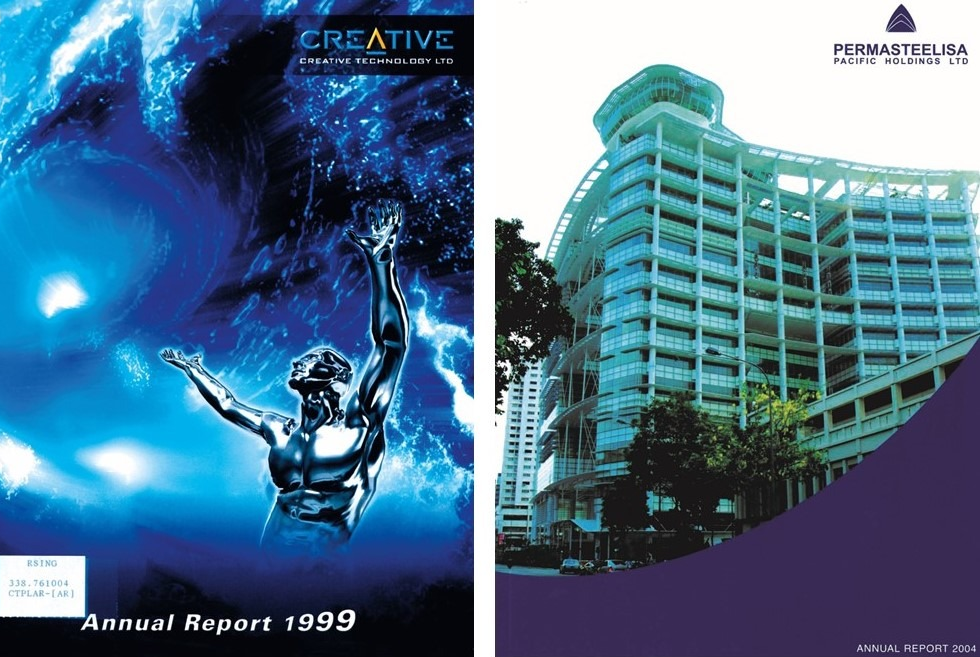
Annual reports are documents that show a listed company’s activities for the financial year just ended. It is mandatory for publicly traded companies to issue annual reports after a financial year end as “business report cards” communicating their past progress to their investors/shareholders. These investors are entitled to a copy of the annual reports so long as they own shares in the companies.
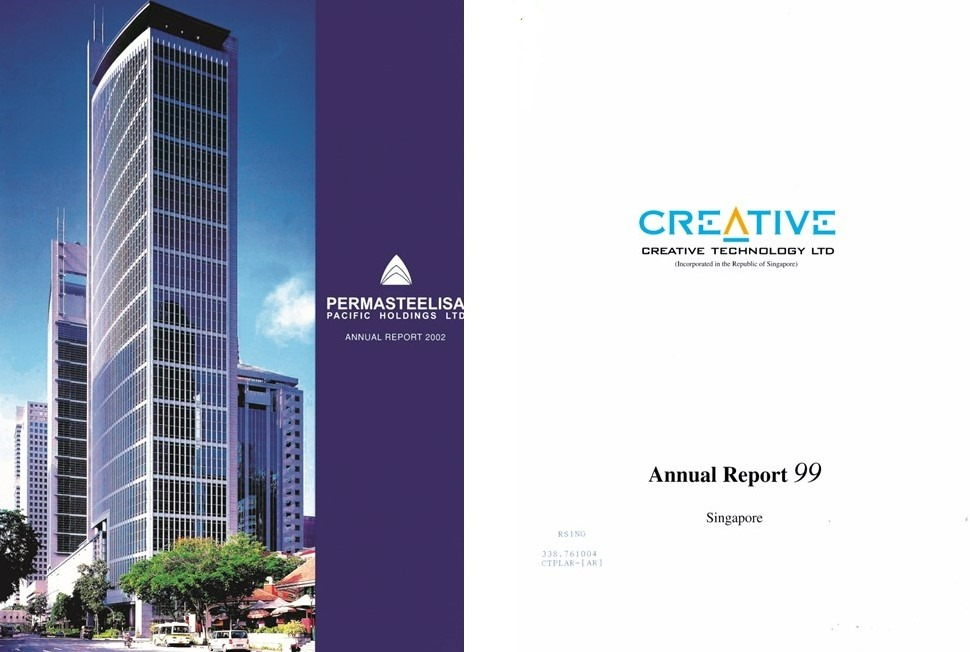
It has been harder for NLB to enforce LD on “publishers” of annual reports as opposed to conventional published books and magazines, as annual reports are widely considered to be non-traditional forms of publishing. A lot of listed companies do not even see themselves as “publishers” at all, as they feel their annual reports are just communication documents meant only for shareholders or potential investors.
Since annual reports are obviously not “for sale” as well, most companies, therefore, conclude that these documents do not fall under the NLB Act as LD. This is an erroneous view as such materials are made publicly available by law and hence are considered “for public distribution”. Constant LD reminders to locally listed companies have helped to alleviate this problem slightly. Regardless, to NLB, annual reports serve as public records of our local business heritage and, most importantly, are primary and direct information sources about our local companies. Hence they should be comprehensively collected for the LD and National Library collection.
The form of the annual report itself is governed by mandatory requirements as prescribed by law, SGX listing rules and accounting standards. Thus, directors’ and auditors’ reports, audited financial statements, and notes to the accounts, etc., are definite inclusions and will follow fairly standard disclosure conventions. Conversely, however, the amount, level and quality of other voluntary disclosures in annual reports are not governed as strictly as the mandatory portions and may end up being just the bare reported minimum, depending on how much a company chooses to disclose. The reason companies generally choose to divulge as little as possible is largely due to the fact that most are reluctant to open up about their detailed workings and plans, as in doing so they feel they are revealing competitive secrets that will in turn jeopardise their vital interests.
Still, it must be emphasised that annual reports do need to be read with a pinch of salt as well. This is because most analysts acknowledge that, outside the required financial documentation, an annual report is essentially a carefully constructed piece of rhetoric in which the annual report has structured the narrative and highlights in such a way that it fulfils the company’s purpose of positioning itself as an attractive investment to shareholders, financial analysts and suppliers, while instilling confidence in its intended audience at the same time. Annual reports will almost always discuss a company’s negative situation in a positive manner.
It is partly for all the above-mentioned reasons that the Best Annual Report Awards in Singapore have been given out since 1974 to recognise and honour listed companies which have helped to raise Singapore’s corporate disclosure standards and corporate governance through their corporate reporting practices.
It can be said that older listed companies’ annual reports, in reasonably mint condition, are even “rarer” now than local one-print-run monographs, since they were never sold in the first place, will never have a chance to be reprinted and, most importantly, were never kept as collectibles by most investors. These new additions from the SGX Collection have hence helped tremendously to:
Complete the history of local companies by filling in some large collection gaps of annual report issues. E.g., LD issue gaps for Jurong Shipyard Ltd from 1987 to 1995 and Hind Hotels International Ltd from 1983 to 2001 are plugged immediately.
Provide information on delisted companies. Local companies that were once publicly traded on SGX (e.g., CWT Distribution Ltd, Hup Seng Huat Co. Ltd) but which had since been delisted and are now operating as private limited entities have no legal obligation to release annual reports anymore. So these older annual reports serve as an historical window into the financial and operating environment and key management personnel in an earlier period of the delisted companies’ business life.
Provide information on defunct companies. For local companies that have not only been delisted but have since been dissolved (i.e., they are now defunct companies), the annual reports serve as the only detailed and publicly available primary documents left of the history and financial data of these firms, e.g., International Wood Products Ltd.
Provide “alternate” annual reports of companies also traded on other stock exchanges. Thanks to the SGX Collection, NLB now has the United States version of the annual reports of Creative Technology Ltd from 1999 to 2003, which were prepared for NASDAQ investors in accordance with US GAAP (Generally Accepted Accounting Principles), to complement its original Singapore versions.
A most interesting new find, however, turned out to be less a standout research point than a celebration of the NLB-SGX MoU, trivia-wise. It turns out that Permasteelisa Pacific Holdings Ltd is the only company listed on SGX to have fortuitously put both MoU partners, SGX and NLB, separately on their annual report covers in 2002 and 2004, respectively. The Permasteelisa Group was the specialist facade subcontractor for the buildings of both partners.
Prospectuses
The IPO prospectus is a legal document that is required of a company seeking a listing on the stock exchange. It is an important historical document of a listed company as it is usually the first official report issued by the company to the public, and precedes its eventual annual reports. It sets out all the relevant information about the company together with its listing dates to help investors decide whether to invest in its shares. A copy of the prospectus also needs to be lodged with, and registered by, the Monetary Authority of Singapore (MAS) and prepared in accordance with the Securities and Futures Act Regulations and SGX listing rules.
Because the prospectus is not as marketing and public relations-driven as the annual report, most analysts and investors actually find that it is a better resource in understanding a company’s business at a deeper level. It includes writeups of its business environment, vulnerability factors, competitors, major suppliers, major customers, technology and know-how involved, audited proforma financials for the last three years, projected earnings, dividends payout and future plans. In other words, it contains a lot more “real” information that one simply does not find in annual reports.
Along with the prospectus (which is actually the finalised registered version), savvy investors who spot an interesting IPO can and do start their research even earlier by zooming in on the preliminary, or “red herring”, prospectus. The “red herring” derives its nickname from the customary red-ink notice printed on the left side of its cover page, which serves as a warning that it is not an official offer to sell the securities. Like the prospectus, the “red herring” preliminary prospectus also contains financial statements and other pertinent information about the company planning to go public, with the exception that it is missing the issue price, number of shares offered, key IPO dates and final confirmed data. As it is usually lodged with SGX/MAS for public comments about three to five weeks before the final registered prospectus and IPO launch, investors have the advantage of using a “red herring” to make buying decisions ahead of the final registered prospectus.
Current e-prospectuses can also now be viewed at the MAS website from its database OPERA (Offers and Prospectuses Electronic Repository and Access). Here is an example of both the preliminary and final registered prospectus from the SMRT Corporation Ltd’s IPO in 2000.

Considering their importance as primary information sources, as historical local heritage documents and as business reports for investment analysis, print prospectuses are surprisingly not very assiduously collected by local libraries, perhaps due to the “insider” nature of their release to potential investors only. However, the SGX Collection has helped to mitigate slightly the NLB and LD Collection gap for local prospectuses and preliminary prospectuses. Notable prospectus titles unearthed from the SGX Collection come from instantly recognisable local brand names such as Eu Yan Sang Holdings Ltd (1973), Overseas Union Bank Ltd (1975), Keppel Shipyard Ltd (1980), Neptune Orient Lines Ltd (1981), Sembawang Maritime Ltd (1987), Tiger Balm Ltd (1988) and Creative Technology Ltd (1994).
Viewing the passage of time through the SGX Collection, one can also see the development and evolution of the prospectus from a few flimsy pages to its current doorstopper thickness. Some early prospectuses did not even call themselves prospectuses on the front covers; they were simply called “New Issue” (of shares). To give readers an adequate comparison, the prospectus of Hotel Tai-Pan Ltd from 1981 had 18 pages in total; but when we zoom forward more than 20 years later to 2004, the Zhongguo Jilong Ltd prospectus appeared with a whopping 306 pages – a clear indication indeed of the increasing need for information transparency, the thirst for more information from the investing public and the higher standards of disclosure imposed by market regulators.
Older Materials from the SGX Collection
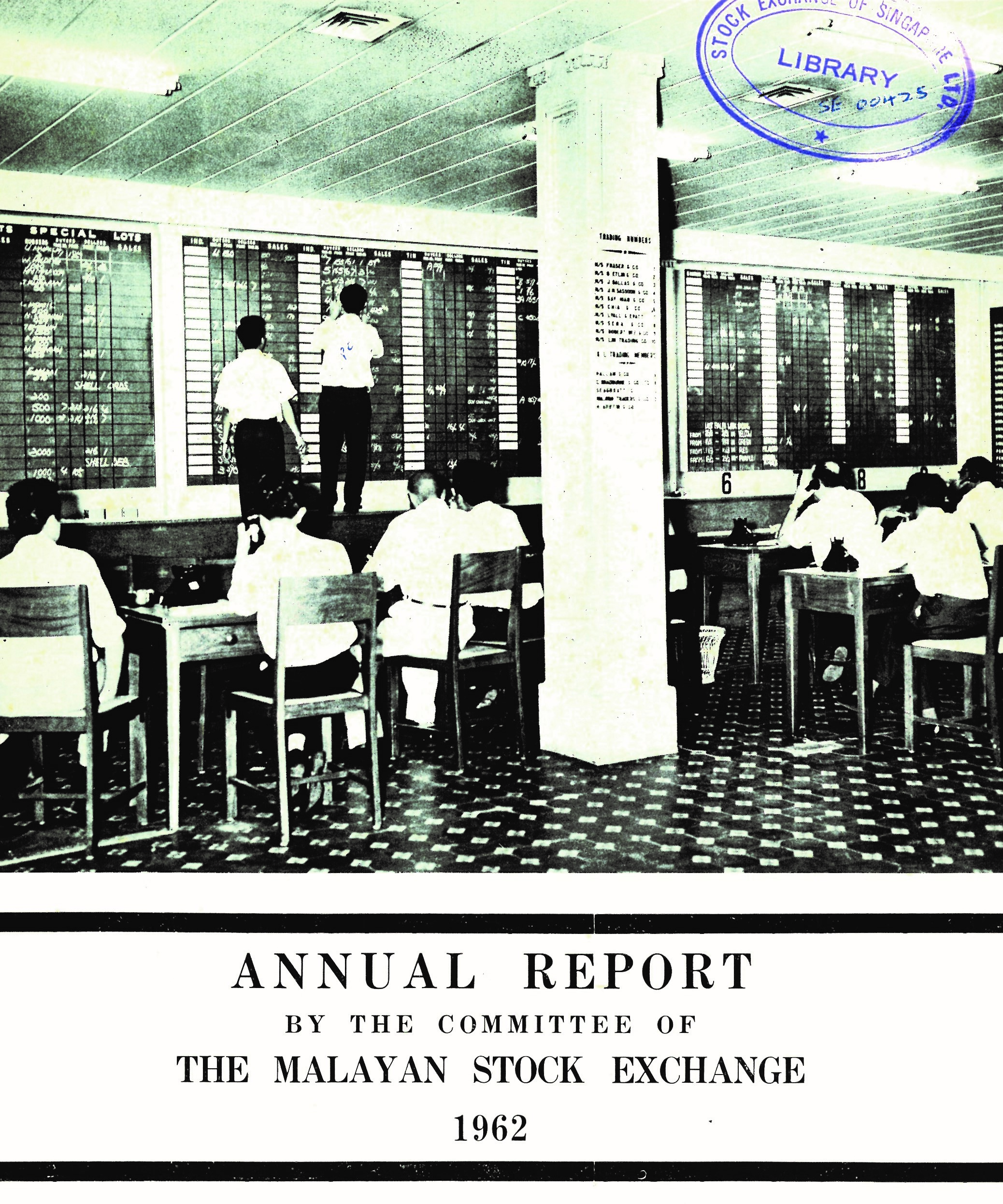
The SGX Information Resource Centre has also kept a lot of older materials from the previous incarnations of SGX, from the early 1960s when it was part of the Malayan Stock Exchange (MSE), to the renamed Stock Exchange of Malaysia (SEM) in 1964 with the formation of Malaysia, and after that the Stock Exchange of Malaysia and Singapore (SEMS) with the secession of Singapore from Malaysia in 1965. SEMS remained as a single bourse until the Stock Exchange of Singapore (SES) was split out in 1973 when the Malaysian government terminated the inter-changeability agreement between the Malaysian ringgit and the Singapore dollar. Even then, dual listings of Singapore and Malaysian shares in both exchanges continued until 1990, when then Malaysian Finance Minister Tun Daim Zainuddin decided that it was in Malaysia’s interest to stop it. Finally, SGX was inaugurated in 1999 when SES was merged with the Singapore International Monetary Exchange (SIMEX). From this earlier period, the SGX Collection has yielded some important new additions to the LD/NLB collection:
• The complete annual report collection from MSE, SEM and SEMS from 1962 to 1972.
• The complete hardbound monthly issues of the Stock Exchange of Malaysia & Singapore Gazette from 1966 to 1973.
• The Malayan Stock Exchange’s Listing Manual from May 1964.
• A Study of the Securities Market in Singapore & Malaysia, a 24-page research study printed circa 1970 by the Singapore Government Printing Office and authored by George M. Ferris Jr., then governor of the New York Stock Exchange. Fascinatingly, he commented on the unique characteristic of the then Stock Exchange of Malaysia and Singapore in that “its trading floors exist in two countries [in Singapore and Kuala Lumpur] and thus the Exchange is subject to supervision by, and the desires of two governments with resultant possible double standards for shares issued and for memberships. National pride also plays an important role in the future form the Exchange can take”.
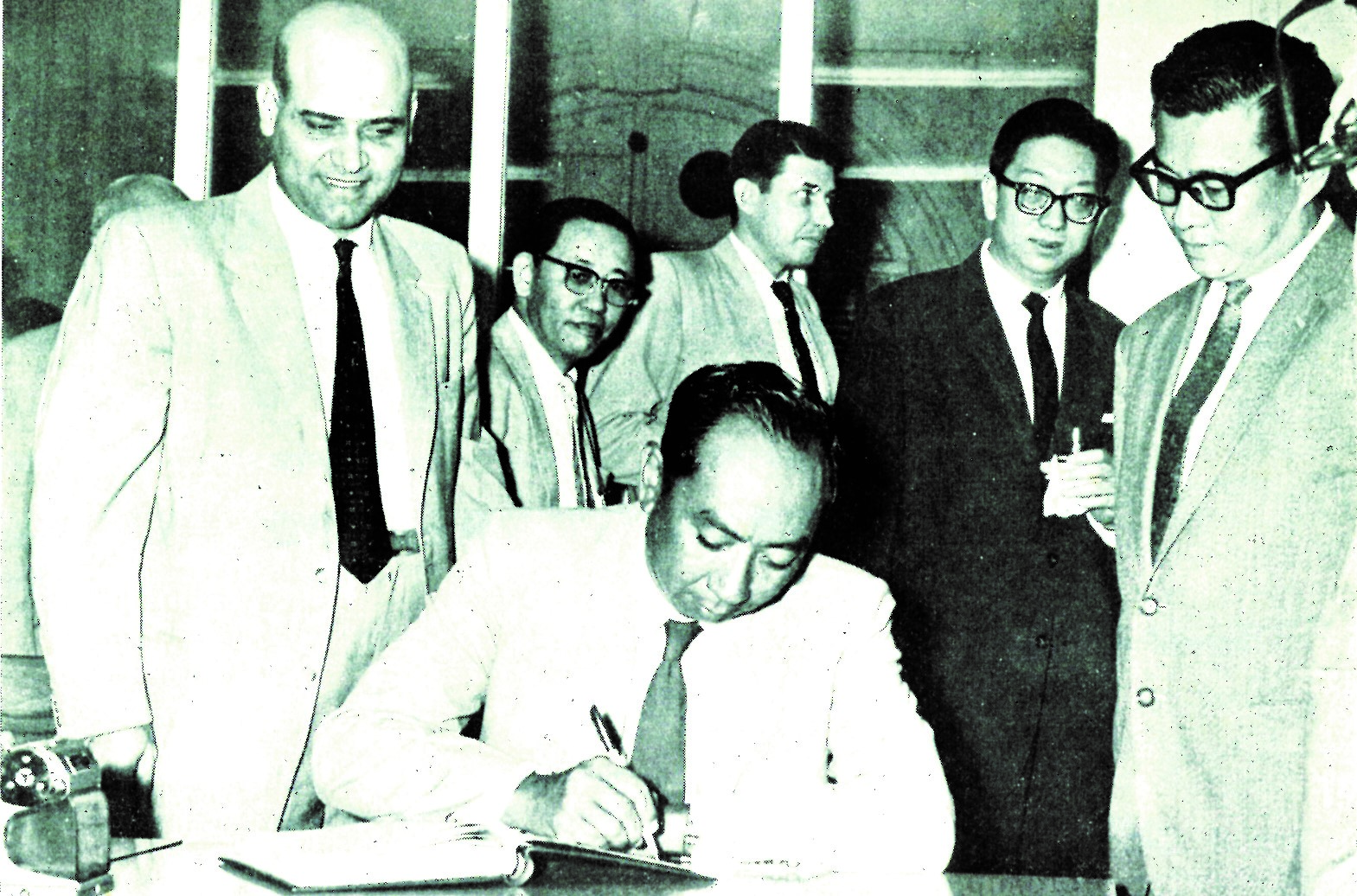
These titles have yielded invaluable information about the early days of stock trading in Singapore from the 1960s to the 1970s. For example, the 1962 MSE annual report had a memorable photograph of Goh Keng Swee, Singapore Minister for Finance, signing the visitors’ book on the opening of the Singapore Trading Room of MSE on 18 February 1961. There was also a writeup on the official opening of the new Kuala Lumpur Trading Room on 20 October 1962, another historic moment, in which “the Ministers for Finance of the Federation of Malaya [Tan Siew Sin] and Singapore [Goh Keng Swee] exchanged pleasantries on the direct telephone line between the two Trading Rooms… better arrangements were made for the use of the direct line and for the first time it could fairly be said that share transactions in the Federation and in Singapore were in fact one market”.
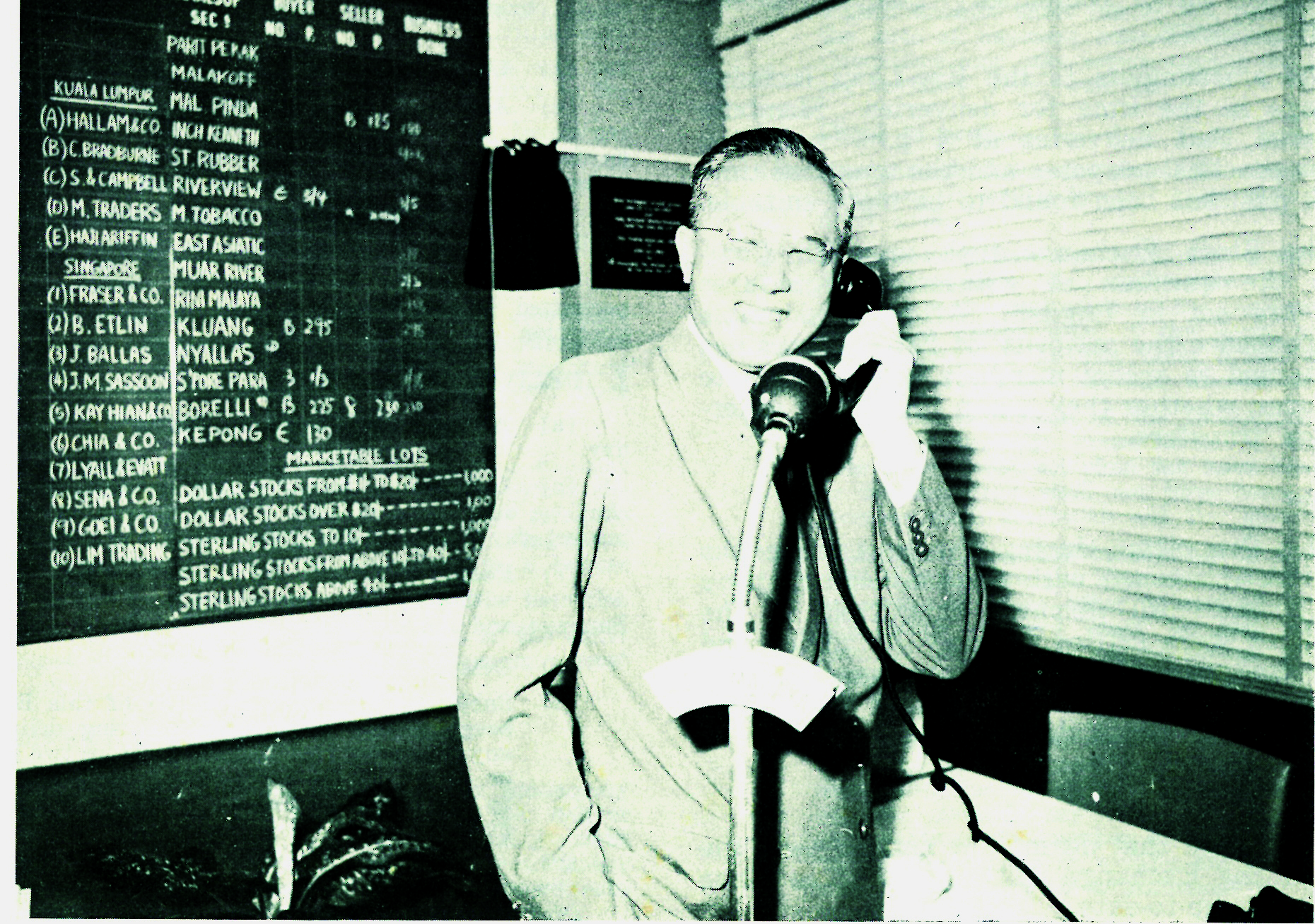
This was about as far back as the SGX Collection went. The first sanctioned securities trading organisation in Singapore actually came into being in 1930, when 15 firms grouped themselves into the (private) Singapore Stockbrokers’ Association. It was formed to regulate the conduct of stockbrokers and to protect investors after the Wall Street Crash of 1929. The association was renamed the Malayan Stockbrokers’ Association in 1937, and trading of shares was still informal and conducted in members’ offices until the Malayan Stock Exchange was established in 1960.
If the NLB could make a donation wish list on what other documents it wished to collect in order to make the history of local shares trading more complete, it would be to procure official publications and reports from these earlier associations. These documents and the SGX Collection will serve as an important reminder to Singaporeans of our local business history as well as our long and rich historical and economic links with Malaysia.
As the spirit of the MoU was to encourage investor access for research, materials discussed in this article have been processed either for the National Library’s Repository Used Collection, the Legal Deposit Collection or the Lee Kong Chian Reference Library Collection. Due to the large volume of items donated, the SGX Collection is still in the midst of assignment, processing and cataloguing by our Library Supply Centre. Readers can find out more about our Legal Deposit and Donation guidelines and policies from our website at https://www.nlb.gov.sg/depositapp/

Librarian
Professional Services
National Library
REFERENCES
“Direct Trunk Line for Stock Exchange,” Straits Times, 22 October 1962, 10. (From NewspaperSG)
Donald Treadwell and Jill B. Treadwell, Public Relations Writing: Principles in Practice (California: SAGE Publications, 2005). (Call no. RBUS 659.2 TRE)
George M. Ferris, A Study of the Securities Market in Singapore & Malaysia (Singapore: Printed by the Govt. Print. Off., 1970). (Call no. RCLOS 332.63 FER)
“Goh Opens New Trading Room,” Straits Times, 19 February 1961, 5. (From NewspaperSG)
Malayan Stock Exchange Committee, Annual Report 1962 (Singapore: Malayan Stock Exchange, 1963). (Call no. RCLOS 332.64209595 MSEAR)
Paul Thompson, “KepLand, Gul Tech Win Awards for Annual Reports,” Business Times, 12 January 2001, 4. (From NewspaperSG)
Phua H., “Initial Public Offers: Always Read the Prospectus,” Pulses (April 2006): 40–41. (Call no. RSING 332.64205 P)
Sharmini Chellapandi, “Legal Deposit Showcase Heightens Public Awareness,” BiblioAsia 5, no. 2 (July 2009): 42–43.
Tan Chwee Huat, Financial Markets and Institutions in Singapore (Singapore: Singapore University Press, 2005). (Call no. RSING 332.1095957 TAN)


